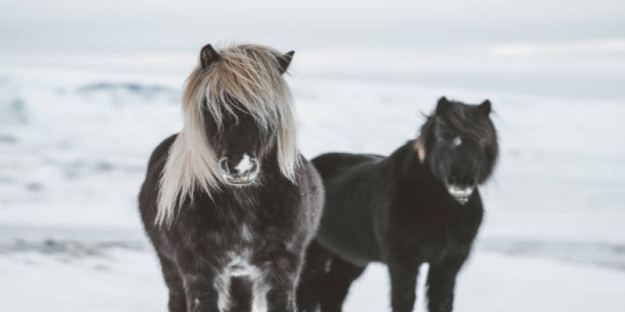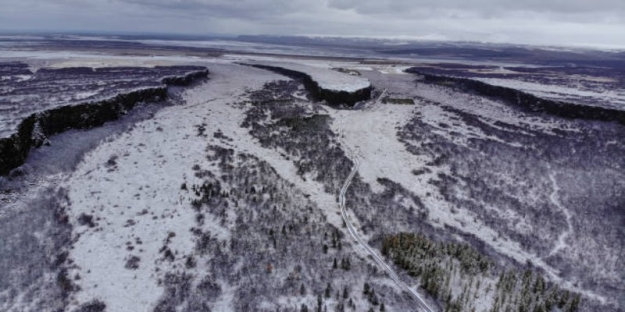There’s a kind of night sky that leaves you speechless; the kind where glowing green lights dance across the darkness like something out of a dream. That’s the magic of Iceland in winter. It's cold, it's quiet, and it feels like another world. For those chasing the northern lights, few places do it better.
There’s a kind of night sky that leaves you speechless; the kind where glowing green lights dance across the darkness like something out of a dream. That’s the magic of Iceland in winter. It's cold, it's quiet, and it feels like another world. For those chasing the northern lights, few places do it better.
The aurora borealis isn’t just a show here; it’s an experience that stays with you. This guide takes you to the best spots where Iceland’s night sky puts on its most unforgettable performance.

Þingvellir National Park
Few locations match the raw atmosphere of Þingvellir. A UNESCO World Heritage Site by day, this rift valley turns into a celestial amphitheater by night. With minimal light pollution and a horizon unbroken by buildings, Þingvellir serves as a prime viewing area for northern lights and Icelandic winter dreams.
Besides, the drama of the aurora feels even more majestic when it dances above a place where Iceland’s first parliament once gathered. Walk along tectonic plates by starlight, and you’ll understand why this spot is a staple in many northern lights tour Iceland packages.
Tip: Walk toward the Öxarárfoss waterfall for added scenery; illuminated icefall beneath an emerald sky is magic few photos can truly capture.
Jökulsárlón Glacier Lagoon
Some places look too surreal for words. Jökulsárlón, with its floating icebergs and still waters, offers the northern lights a perfect stage to reflect their color show. The nearby Diamond Beach, where shards of glacier ice scatter across black volcanic sand, adds to the theatrical setting.
It’s a bit of a drive from Reykjavík, but the journey is half the experience, winding past waterfalls and lunar landscapes. For those interested in Iceland off-season travel, this route often avoids heavy tourist traffic, letting you soak in the solitude.
Best Time to Go: Aim for new moon nights between November and March for the clearest views.
Vík í Mýrdal
Famous for its black sand beaches and jagged sea stacks, Vík surprises many with its potential for aurora sightings. The wild Atlantic wind, the skeletal cliffs, and the remoteness make this coastal town one of the mooriest and most cinematic backdrops for northern lights photography.
Watching the sky shimmer above Reynisdrangar’s basalt towers feels like stumbling into a Norse myth. It’s raw, dramatic, and thrilling all at once.
Cheeky Tip: Bring thermal socks. Those sea winds do not care how poetic the sky looks.
Snaefellsnes Peninsula
The locals call this peninsula “Iceland in Miniature,” and rightly so; it offers glaciers, lava fields, beaches, and volcanoes, all in one compact package. When the clouds part, the northern lights sweep above the snow-covered peak of Snæfellsjökull glacier like ribbons on a white crown.
Kirkjufell mountain, one of Iceland’s most photographed spots, adds drama to every frame. Picture it: a perfectly conical peak beneath curtains of green light. Yes, it’s as stunning as it sounds.
Photo Tip: Frame Kirkjufell with the nearby waterfall in the foreground. No filter needed.
Hella and Hvolsvöllur
Tired of staking out parking lots and braving tourist clusters? These quiet southern towns provide a more personal viewing experience. Their remote countryside lodges often have hot tubs, allowing visitors to watch the aurora in comfort, preferably with a mug of something warm.
For those collecting iceland winter travel tips, here’s one: don’t just chase the lights—wait for them where the silence wraps around you.
Bonus: Some lodges offer aurora wake-up calls. No more hovering by windows for hours— just doze off and let someone else do the sky patrol.
Ásbyrgi Canyon
Shaped like a horseshoe and flanked by steep cliffs, Ásbyrgi isn’t just a geological marvel; it’s
rumored to be the hoofprint of Odin’s eight-legged horse, Sleipnir. Whether that’s true or not, this lesser-known northern location offers some of the most ethereal aurora sightings without the crowds.
With the northern sky unobstructed and a blanket of snow beneath your boots, this canyon turns into an amphitheater of light during winter nights.
Good to Know: Roads here can be tricky in winter. Four-wheel drive and weather checks are your best friends.

Grotta Lighthouse, Reykjavik
Not keen on venturing far? You can still catch the northern lights within the city limits. Head to the Grotta Lighthouse area on the Seltjarnarnes Peninsula; close enough to downtown Reykjavík, yet dark enough to give you a fighting chance at seeing the sky dance.
It’s not as pristine as the countryside, but for travelers on a tight itinerary, it’s a solid, accessible option.
Strategy Tip: Use an aurora forecast app and wait till after midnight for clearer skies and fewer crowds.
Iceland Winter Travel Tips for Aurora Hunters
Timing is Everything: Peak season runs from late September to mid-April. Plan your trip for at least 5–7 nights to increase your chances.
Stay Flexible: The aurora is a diva. She doesn’t follow a schedule. Cloudy one night, glowing the next; keep your evenings open and your expectations relaxed.
Dress for northern lights, Iceland winter, the Arctic: Think layers, windproof coats, and good boots. Iceland off-season travel means colder conditions, but also better chances of scoring quiet moments and clear skies.
Join a Local Tour: For those who prefer a guided experience, many northern lights tour iceland operators offer flexible departures, expert guidance, and warm beverages along the way.
According to an estimate, Iceland’s northern lights tourism market earned US$27.3 million in 2024 and is projected to grow at a CAGR of 10.1%, reaching US$48.9 million by 2030.
While the northern lights can’t be summoned on command, Iceland gives you a front-row seat to one of nature’s most spellbinding shows. From glacier lagoons to windswept beaches, from folklore-soaked canyons to volcanic peaks, this country was made to wear the aurora like a crown.
The skies in Iceland don’t just sparkle; they perform. All you have to do is look up.
- Share this article:
-
![Hearing Loss Solutions in Senior Living: A Step-by-Step Guide]() Health & Medical Treatment
Health & Medical Treatment - Hearing Loss Solutions in Senior Living: A Step-by-Step GuideHaving worked with seniors for years, I've witnessed how hearing loss quietly sucks the joy out of life. Picture your favourite song slowly fading into silence or the laughter of your grandchild growing fainter. It may feel isolating—but it doesn't have to be. Let's walk through this together and discover how seniors and their families can confront hearing loss with real-world, life-altering solutions.
-
![A Guide To The Best Safari Destinations In Africa]() Travel
Travel - A Guide To The Best Safari Destinations In AfricaImagine watching lions roam, and elephants gather at waterholes during a breathtaking African sunset. Africa offers incredible safari experiences, with vast natural landscapes and wildlife in their purest form. Let's read about top safari destinations, from witnessing the Great Migration to luxurious or adventurous safaris tailored to all preferences.


-
Health & Medical Treatment
How To Prevent UTIs Naturally: Science-Backed Tips -
Health & Medical Treatment
How To Prevent Kidney Stones With Simple Diet Changes -
Travel
How To Blend In Like a Local: Travel Etiquette Around The World -
Home & Garden
How to Paint Your Walls Like a Pro: A Step-by-Step Guide







